A week before Zohran Mamdani astounded the world by his out-of-nowhere, odds-defying, convention-shattering victory in the New York City mayoral election, members of his vast army of youthful volunteers were amply aware of what was at stake.
A group of 16 had assembled in the Bohemian Hispanic neighborhood of Bushwick in Brooklyn for one last push to heave the Democratic candidate over the line.
Juuli, the field lead of the group who was coordinating that night’s canvassing on behalf of the Mamdani campaign, was running through the key messages to be delivered to voters on the doorstep. Emphasise the candidate’s policy platform promising to make New York a more affordable city, she said.
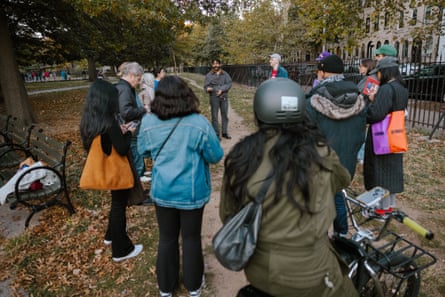
And there was one other thing she wanted the volunteers to stress that they wouldn’t find in the official campaign script. “Remember to mention that he’s the Democratic nominee for mayor of New York City, not just some social media guy.”
On Tuesday, that social media guy pulled off one of the great upsets in American politics in the era of Donald Trump. He defeated the Democratic behemoth and former New York governor Andrew Cuomo running as an independent, and the Republican Curtis Sliwa, to become leader of the country’s largest city and its first Muslim mayor.
An unashamed democratic socialist had won control of the capital of capitalism.
He did so having catalysed the largest voter turnout in the city in more than half a century. And that in turn was in no small part achieved on the back of his foot soldiers, who gathered nightly in Bushwick and in every pocket of New York to spread the word.
By election night, that volunteer army had grown to more than 100,000, making it the greatest field operation by any political campaign in New York history. Mamdani paid homage to it in his victory speech, lauding it as an “unstoppable force” that with every door knocked on and every hard-earned conversation had “eroded the cynicism that has come to define our politics”.
This is the stuff of political legend. Coming at a time when the Democratic party is in the doldrums, mired nationally in low public ratings and a crisis of confidence following Trump’s defeat of Kamala Harris last November, Mamdani’s victory will be pored over by strategists as a possible blueprint for a way out of the quagmire.
In nine short months, Mamdani went from a virtually unknown assemblyman in the New York state legislature, ranking alongside “Someone Else” at the bottom of opinion polls, to mayor-elect. At the beating heart of his campaign was the field operation, with its enormous reserves of largely unpaid New Yorkers tirelessly conveying his message of progressive change.
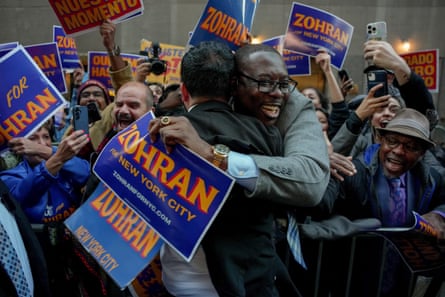
How did they do it? What was their secret sauce? And the question that every Democratic candidate will now be asking: can it be repeated across the plains and mountain ranges of America in the battle to resist Trump?
“Zohran Mamdani is modeling a different kind of politics,” Bernie Sanders, the US senator from Vermont who was the inspiration for Mamdani’s democratic socialist politics, told the Guardian. “As mayor, Zohran will be a champion for the working people of New York. That idea might frighten the establishment and the billionaire class, but it is precisely why more than 100,000 volunteers turned out to enthusiastically support his campaign.”
Very early on, Mamdani’s top team of advisers began to notice that something extraordinary was happening on the ground. That was long before newspaper articles began to appear about the obscure would-be mayor with an army of young supporters.

Álvaro López remembers being struck back in December, when the campaign held its first big canvassing event, by the intensity of positive feedback on the doorstep. López is electoral coordinator of the New York chapter of the Democratic Socialists of America (DSA), the political organization to which Mamdani belongs that has acted as a kind of kitchen cabinet for his campaign.
Several key positions have been filled by DSA members, including Mamdani’s revered field director, Tascha Van Auken, and communications manager, Andrew Epstein. Elle Bisgaard-Church, his 34-year-old campaign manager who was Mamdani’s chief of staff in the New York state assembly, also has a DSA background.
López recalls attending the field launch on 19 December, about six months before the Democratic primary election. They had selected seven locations in which to test out their fledgling on-the-ground operation, with a tight focus on rent-stabilised working-class neighbourhoods where the DSA already had strong roots.
The idea was to see whether Mamdani could gain traction by leaning on one of his core policy promises: freezing the rents in the city’s approximately 1m rent-stabilised apartments. If that test-run worked, they would then widen the target group to include other New Yorkers.

López told the Guardian that from the get-go he had high hopes for Mamdani’s populist campaign. It was just six weeks after Trump’s presidential victory, and New York’s left-leaning population was desperate for any sign of hope.
What López witnessed that day still took him by surprise. He was knocking on doors in an apartment block in Astoria when he engaged with a woman who was so excited by the promised rent freeze, even though she wasn’t herself living in a rent-stabilised unit, that she took out her purse and handed him several dollars in donation.
He was taken aback. At that point the campaign hadn’t even set up a fundraising channel, yet when he talked to other field organizers they reported the same thing: they too had been donated $5, $10, $20 bills, entirely unsolicited.
“We had struck gold,” López said. “Voters were identifying with the campaign and its promise to make the city more affordable, and they really wanted an alternative to Trump. We were catching that energy.”
That was the start of what quickly grew into a vast fundraising and grassroots mobilization campaign. While Mamdani’s rivals, led by Cuomo, concentrated on attracting big donations from moneyed interests, Mamdani went down the small-donor route pioneered by Sanders in his 2016 presidential bid.
In March, just three months after that first December field test, Mamdani suspended fundraising for the primary election after reaching the legal spending cap in record time. He had attracted more than $8m from 180,000 donors.
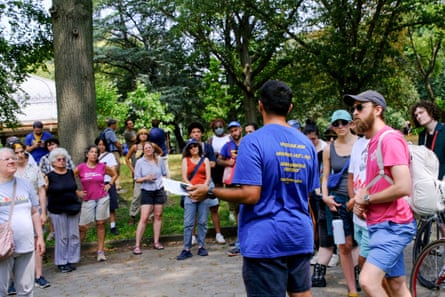
In September he did it again. He called off fundraising for this week’s general election, having hit the $8m ceiling faster than ever before.
It wasn’t just fundraising records that were smashed. Campaign organisers set themselves a target of training 250 field leads to run the canvassing network, and within weeks had exceeded 500.
The cascade effect replicated itself with volunteers, who descended on the campaign in droves. “There were 50 or 100 showing up, we had to recruit more field leads to cope with the crush,” López said.
This was unusual, to say the least. Most Democratic campaigns leave the heavy lifting to be done by 30-second TV ads, with direct door-knocking contact with voters relegated until the final days of the election.
Cuomo followed this conventional mould, running such a lackadaisical top-down operation that he had to pay canvassers to do the field work that Mamdani’s eager supporters did for free.
Top down is not how Mamdani went about this race. It’s not how he thinks.
In an interview with the Guardian shortly before the June primary, Mamdani explained to me how he viewed his bottom-up insurgency. He talked about the need to change “a political impulse of lecturing to listening”.
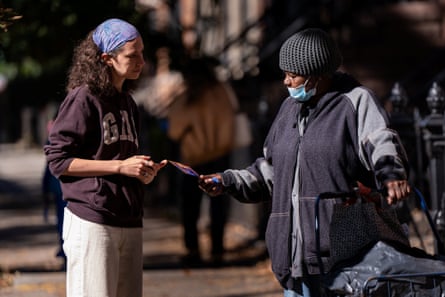
Listening is exactly what Mamdani set out to do just days after Trump had won the presidential election. He set up shop in working-class streets in the outer boroughs like Fordham Road in the Bronx and Hillside Avenue in Queens where Trump, despite the districts’ large immigrant populations, had enjoyed a double-digit swing from the Democratic party.
Mamdani carried out what was in effect his own one-person field operation, asking life-long Democrats why they had voted for Trump or failed to vote at all. “What I learned is that many did so because they remembered having more money in their pocket four years ago” and that they craved from the Democratic party “a relentless focus on an economic agenda”.
And that is how he ran his mayoral campaign.
The field operation was founded upon that initial voter engagement and the focus on affordability that flowed from it. Just weeks after Harris had lost the presidential race having lectured voters about the threat to democracy posed by Trump, Mamdani decided to go the opposite direction – on the back of what he had heard during his listening tour of the city, he would canvass people not on generalities but around the specific struggles of their daily lives.
The rent freeze, free and fast buses, cheap city-run groceries and free childcare were placed at the top of his platform.
The field operation was devised consciously as an attempt to win Trump-voting defectors back into the Democratic fold. Exit polls from election night suggest that it worked.
Mamdani won the Bronx, a borough that is majority Hispanic and which had swung notably towards Trump, by 11 points.
That’s on top of his soaraway success with young voters, with an astonishing 78% of 18- to 29-year-olds backing him.
Part of the strategy to woo back Trump defectors was an emphasis on showing respect for everyone on the doorstep. Canvassers were encouraged to engage with people, without judgment.
“We’ve emphasised that it’s important not to chastise, not to speak down to people who turned to Trump or who just don’t vote,” López said.
You could see that ethos in Bushwick.
Cynthia, 37, knocked on the door of a woman who was wearing a Puerto Rico T-shirt and who, when asked, said she never voted.
Cynthia shared with the woman that she too had never voted in her life. This time, though, she said, she was casting a ballot for Mamdani because he would make the buses free.

“And who’s going to pay for that?” the woman said, sounding irked. She revealed that she herself was a bus driver working for the city, and that she feared that if Mamdani made the buses free and it all went wrong she would lose her job.
The doorstep conversation lasted more than five minutes, as Cynthia tried to assuage the woman’s fears. It didn’t work – the woman appeared determined not to vote. But at least the interaction had been cordial, the woman’s opinions recognised.
Cynthia’s open approach about her own lack of voting history was part of what made the Mamdani field game so powerful. Volunteers were encouraged to air their own personal experiences and views on the doorstep, even if they had never canvassed before and had no experience in formal politics.
“We don’t want our volunteers to give elevator pitches,” Juuli, the field lead, said. “If you are passionate about something, and that’s why you are canvassing, then say it out loud.”
In most established political campaigns, paid staff make the decisions while volunteers do the donkey work. The Mamdani campaign turned that on its head.
Volunteers were encouraged to contribute ideas. Many were rapidly promoted into responsible positions as field leads and then field directors with real influence over campaign strategy.
“Mamdani’s campaign gave the keys to his supporters in unique ways that reflected the new political environment,” said Rick Fromberg, who is well versed in the challenges of running a mayoral campaign in New York City. He was the campaign manager of Bill De Blasio’s successful re-election bid in 2017.
“Campaigns in general are extraordinarily risk averse,” Fromberg said. “But Mamdani’s campaign was risk forward. They allowed a broad cross-section of his supporters to take ownership of the campaign – and that decision paid off.”

When political historians look back on the 2025 mayoral race it is possible they will fall into the trap that Juuli, the Bushwick field lead, articulated – by casting Mamdani as “just some social media guy”. That, after all, is how he was widely portrayed in the media during the mayoral race.
Social media has undoubtedly been an important part of Mamdani’s approach. In his Guardian interview, the candidate told me that he regarded social media as a way of achieving what he calls the “politics of no translation”.
“That means you speak directly to people about the crises they are facing, with no intermediaries. They can pull out their phones and see a video right from you. If I tell you I’m going to freeze your rent, you know exactly what I’m calling for.”
Mamdani credits Alexandria Ocasio-Cortez, the New York congresswoman and fellow democratic socialist, with opening his eyes to the potential of such direct communication. It was her launch video in 2018, “The Courage to Change”, that showed him the way.
Over the course of the mayoral race Mamdani has proven himself to be a master of the form, releasing a stream of videos that are funny, combative, creative, self-deprecating and authentic-feeling – not to mention invariably viral. Yet what much of the media coverage overlooked is how closely Mamdani connected his social media to the affordability message that his army of canvassers disseminated across the city.
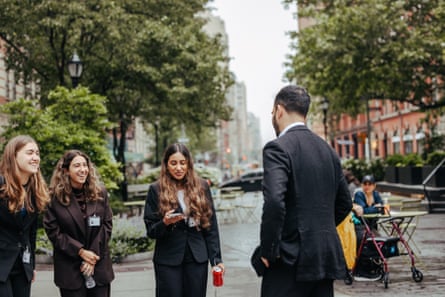
The video of a fully suited Mamdani taking the Polar Bear plunge in Coney Island will long be remembered as a surreal piece of political theatre, but its purpose was to drive home his promise to freeze stabilised rents. His spoof of his Democratic primary rivals, Cuomo and Eric Adams, as two old dudes bickering in a New York diner was slapstick fun, but its punch was to present them as archetypes of a party establishment that had had its day.
The same duality applies to the eye-catching events staged by the campaign that were both entertaining and relentlessly targeted. In August they held a scavenger hunt that drew about 5,000 New Yorkers from all corners of the city.
Last month about 1,500 turned up for a soccer tournament in Coney Island where mixed-gender teams played friendly matches borough against borough. Both events broke the mould of serious politics, while at the same time serving a serious political purpose – they underlined Mamdani’s commitment to, and love of, New York City, and drew people to his cause who had never before participated in the political process.
There’s another striking contrast here between Mamdani’s campaign and the failed presidential bid of Harris. Both candidates stressed “joy” in their pitch to voters.
But while Mamdani was painstakingly careful always to tie his “joy” to his vision for New York, Harris was imprecise, leaving many people to wonder what she was feeling so joyful about.
“The Harris campaign tried to make joy the centrepiece of their platform but it fell flat because where was the substance?” said Denia Pérez, who spent much of this year canvassing for Mamdani. “In our campaign there was lots of joy, but it was always tethered to a substantive promise of change that will make people’s lives easier.”
Back with the Bushwick canvassers, you could see that duality – fun plus targeted politics – strongly on display. The volunteers were given “Zetro” cards mimicking Metro cards for the subway: each time they canvassed they got a stamp, and when the card was full they were rewarded with a free Mamdani poster or T-shirt.

When the night’s canvassing was done, the volunteers were invited for a debrief to a Bushwick bar, Misfit Moon, serving botanical kava and katrom. The mood was upbeat and ebullient, but Mamdani’s policies dominated the conversation.
Mac Nicholas, 26, dressed in a “Hot Girls for Zohran” T-shirt, reflected on her first time canvassing. She says it had felt good to support a candidate trying to make the city affordable for everyone.
“I believe he’s genuine and has compassion, and we need that in City Hall,” she said.
Cynthia, the one who had never voted before let alone canvassed, said what had driven her to Mamdani’s cause was that she was fed up with Democratic smugness. “How many times did I hear people say, ‘There’s no way Trump is going to win.’ I’m out here to remind people we no longer have the luxury of being complacent.”

Mamdani’s mould-breaking field operation didn’t come out of the ether. He’s been working towards Tuesday night for many years. Like that other Democratic politician with a magician’s knack for mobilising voters, Barack Obama, Mamdani came to electoral politics via community organizing.
He got his first taste of the thrill of engaging voters in 2015 when he volunteered for a city council campaign in Queens. “Climbing a six-story walkup, getting to that top floor, and having a senior open their door – you see a glimpse into what it is that they live with every single day,” he recalled to the New Yorker.
That same year he canvassed for a pastor, the Rev Khader El-Yateem, in the Brooklyn neighborhood of Bay Ridge, where 9/11 first responders live cheek by jowl with Yemenis and Palestinians.
It was that election, in which El-Yateem attracted almost a third of the vote, that taught him the importance of expanding the Democratic base to include Muslims like himself and other New York demographic groups traditionally ignored by the party. It also implanted the idea that one day he might run for office himself.
In 2018, Ross Barkan had a chance to experience Mamdani’s nascent field organising skills up close. That year, Barkan had taken a break from his day job as a New York-based writer to run for a Brooklyn seat in the state senate.
Mamdani was his first hire. Barkan employed him as canvassing director, then campaign manager.
Looking back, Barkan can see the green shoots of Mamdani’s explosive rise already sprouting as they plotted the senate race together.
“It’s clear watching him today that he was thinking about this kind of unabashed progressive campaign for many years,” Barkan told the Guardian. “He was always a brilliant leader of volunteers and canvassers. He trained them, he showed them how to connect with voters. For him, field was paramount.”
Mamdani took the organizer’s sensibility with him in 2020 when he entered the New York state assembly representing Astoria in Queens. Within a year of taking up the seat he joined a cab driver, Richard Chow, in staging a 15-day hunger strike outside City Hall seeking relief for taxi drivers’ crushing debts.
They won, as Mamdani recalled on Tuesday in his victory speech. “My brother, we are in City Hall now,” he said.
All these past lessons were brought to bear on the mayoral race, with resounding results. His Bay Ridge experience of expanding the base came into play, with the field operation releasing campaign materials in Urdu, Bangla and Spanish.
A huge canvassing push to engage Muslim and south Asian voters across the city, propelled by Mamdani’s condemnation of Israel’s war in Gaza as a genocide, also paid dividends.
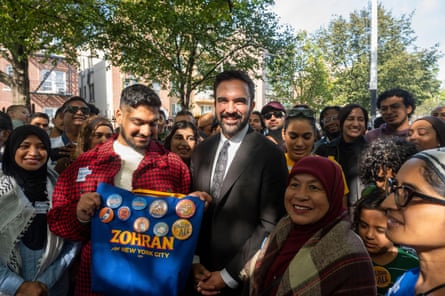
Mohamed Gula of the Muslim civic engagement group Emgage, which backed Mamdani, estimates that turnout among the 380,000 Muslim New Yorkers who are registered to vote is likely to have doubled on Tuesday. That’s up from the 22% who participated in the mayoral election four years ago.
“So many Muslims have been inspired by Zohran’s campaign. It speaks to a new wave of Muslims who are proud of America being their home,” Gula said.
With Mamdani’s thumping victory, thoughts are now quickly turning to the hard road that lies ahead – both for New York’s mayor-elect and for his wider party. As statistics of Mamdani’s win filter through, illuminating the neighborhoods and demographic groups that propelled him into Gracie Mansion, deeper lessons will emerge about how to resist Trump and his Maga insurrection.
Mamdani’s top team told the Guardian that they were already thinking hard about what to do with the vast volunteer army and the energy that it commands. How should it be harnessed and put to use in the battle ahead?
Obama generated similar kinetic forces in his 2008 “Yes we can!” campaign, but then allowed them largely to dissipate once he was inside the White House. Mamdani is determined not to make the same mistake.
So watch this space. We will surely be hearing more from Mamdani’s army that bore his message on their shoulders and delivered it to New Yorkers, one door at a time.

 German (DE)
German (DE)  English (US)
English (US)  Spanish (ES)
Spanish (ES)  French (FR)
French (FR)  Hindi (IN)
Hindi (IN)  Italian (IT)
Italian (IT)  Russian (RU)
Russian (RU)  3 weeks ago
3 weeks ago






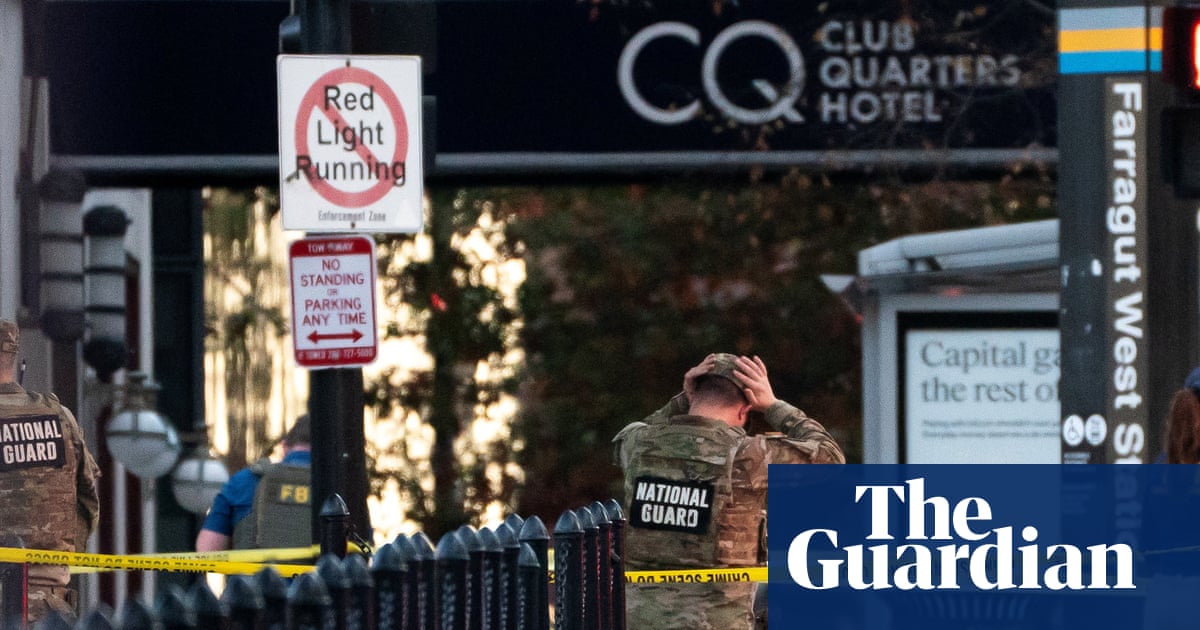
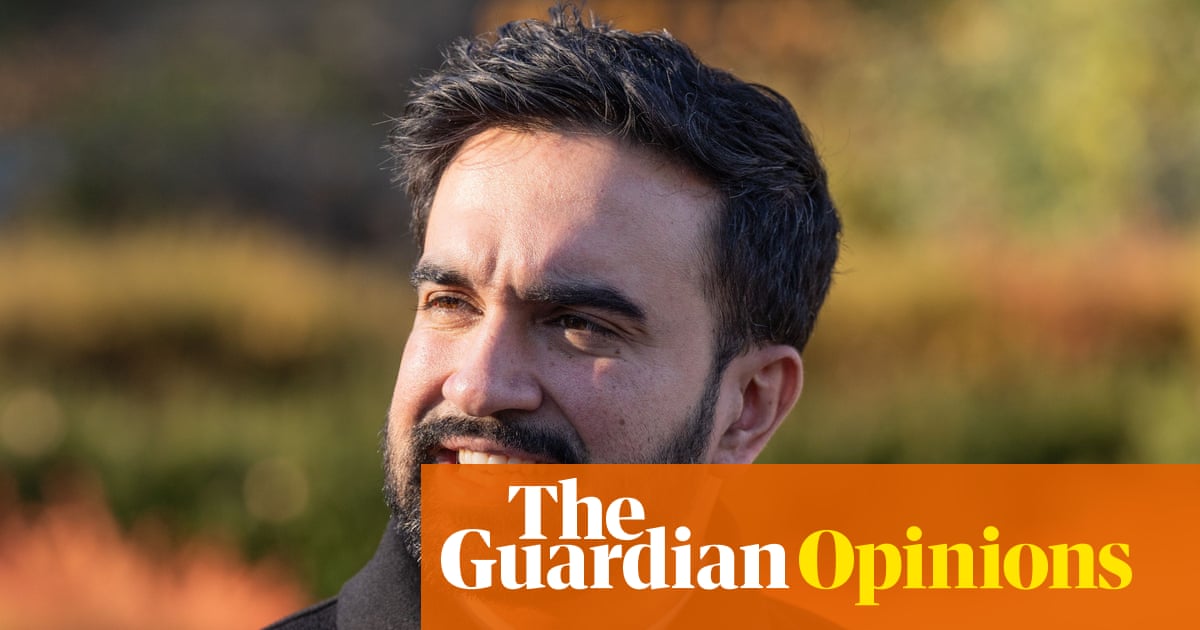










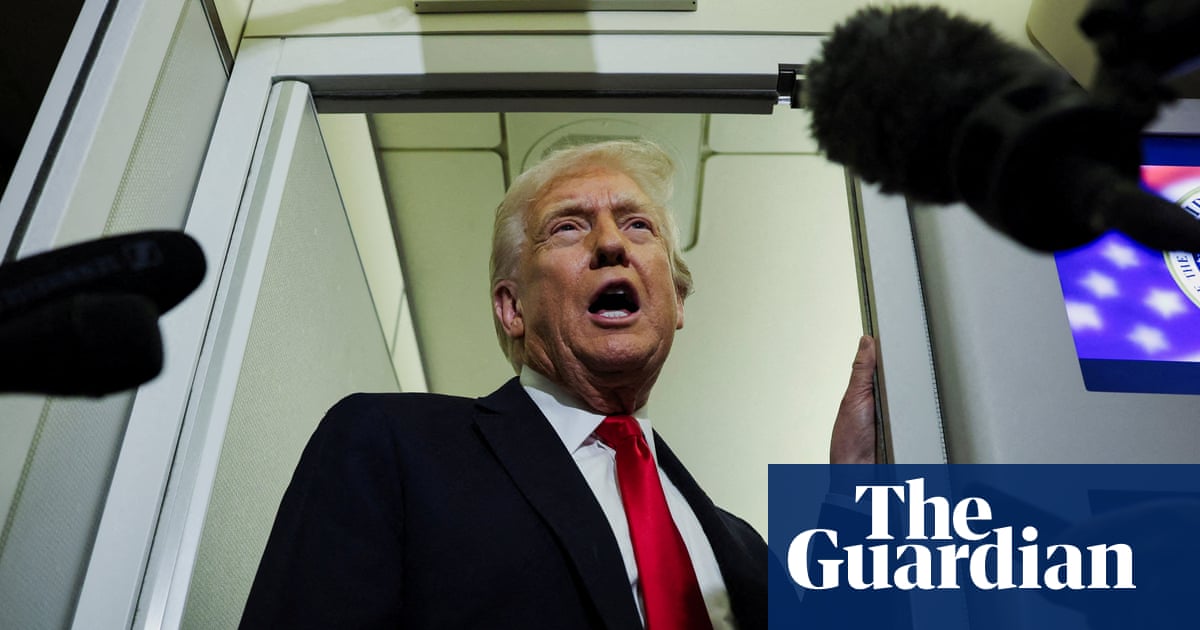


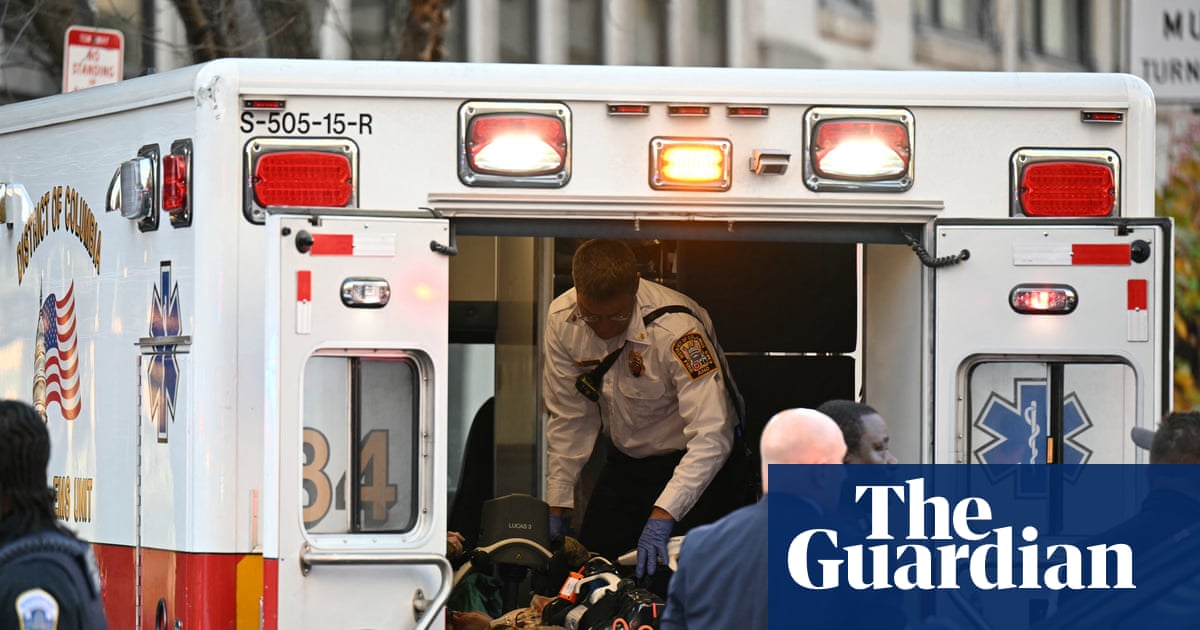


Comments